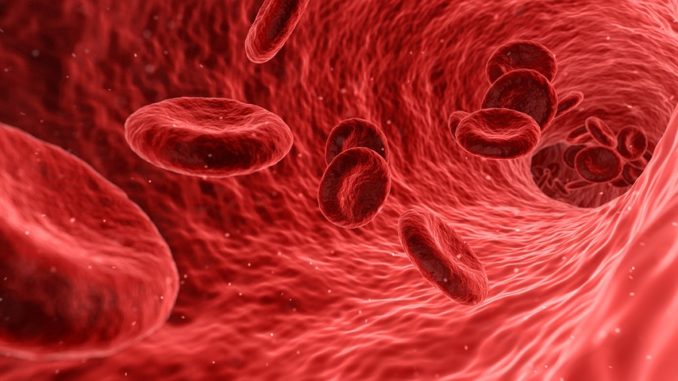
Here is the summary of the patent submitted:
The present invention is based on the inventors’ surprising discovery that certain bacterial strains showed enhanced in vitro adhesion to one or more of the ABO biood group antigens. This finding enables the selection of ABO biood group-specific bacteria for use in probiotic compositions and for the treatment or prevention of gastrointestinal disorders.
While not wishing to be bound by theory, it is thought that as the glycan structures of the ABO blood groups are abundant in the mucosa and serve as bacterial adhesion sites and nutrient sources, stronger binding to one or more ABO antigens by a probiotic bacterium wiil improve its colonization of the bacterium in the gastrointestinal tract by enhancing its interaction with the mucosa. The probiotic bacterium may also demonstrate enhanced health effects by blocking the adhesion and invasion of certain pathogenic microbes which also bind to ABO antigens. A probiotic bacterium which adheres to an ABO antigen could also enhance the probiotic responses by providing tighter and longer-lasting contact between the host cells and probiotics. It could further provide the host easier access to any beneficial metabolites produced by the probiotics when probiotics are colonized tighter and more Song-lasting.
The inventors have further shown that certain probiotic bacteria are more resistant to acid and/or bile. These properties may be helpful to enable the bacterium or metabolite thereof to survive the conditions of the stomach and gastrointestinal tract, and are therefore advantageous properties for a probiotic bacterium. Acid tolerance may also be beneficial if the strain is fermented in a product such as yogurt.
Accordingly the present invention provides a bacterium or metabolite thereof characterised by:
a) an average A antigen adhesion of more than 100% when compared to L. crispatus LMG18199; and/or
b) an average B antigen adhesion of more than 100% when compared to L crispatus LMG18199; and/or
c) an average O antigen adhesion of more than 100% when compared to L c/7spaft/sLMG18199; and/or
d) more than -2. 6 average acid tolerance represented as a log change when measured at pH 2.5 for 1.5 hours as defined in an acid resistance assay; and/or e) more than 40% average bile tolerance represented as growth in 0.9% dehydrated fresh bile as a percentage of growth in MRS without bile as defined in a bile resistance assay.
The bacterium of the invention may be a bacterial strain deposited as DSM 321 11 , DSM 32108, DSM 32107, DSM 32098, DSM 32104, DSM 32112, DSM 32109, DSM 32105, DSM 32110, DSM 32103, DSM 32099, DSM 32106, DSM 32097, DSM 321 14, DSM 32115 or a mutant, a variant and/or a progeny thereof.
According to another aspect of the present invention there is provided a probiotic composition comprising a bacterium or metabolite thereof according to the invention and a suitable carrier.
The probiotic composition of the invention may comprise a combination of 2, 3, 4, 5 or 6 bacterial strains or metabolites thereof according to the invention, optionally in combination with one or more further bacterial strains.
The probiotic composition may further comprise a prebiotic component.
The present invention also provides a method of producing a probiotic composition of the invention, the method comprising combining the selected bacterium or metabolite thereof with a suitable carrier.
The invention further provides a food product comprising a probiotic composition according to the invention.
According to another aspect of the invention there is provided a method of selecting a bacterium or metabolite thereof comprising:
a) admixing one or more test bacteria with an A antigen, B antigen, O antigen or combinations thereof;
b) admixing one or more Lactobacillus reuteri RC-14 control bacteria with A antigen, B antigen, O antigen or combinations thereof;
c) incubating said admixtures of step a) and b);
d) comparing the affinity of adhesion to said A antigen, B antigen, O antigen or combinations thereof of the test bacteria and Lactobacillus reuteri RC-14; and e) selecting bacteria having a higher affinity of adhesion to said A antigen, B antigen, O antigen or combinations thereof than Lactobacillus reuteri RC-14.
In one embodiment, the admixtures are incubated in separate vials in step (b).
in another embodiment, the method is a fluorescence based method.
In a further embodiment, bacteria are selected which have:
a) an average A antigen adhesion intensity of fluorescence of more than 549;
b) an average B antigen adhesion intensity of fluorescence of more than 519; and/or c) an average O antigen adhesion intensity of fluorescence of more than 746.
The invention further provides a bacterium or metabolite thereof selected by the method of the invention.
In a further aspect, the invention provides the use of a bacterium or metabolite of the invention or selected by a method of the invention, or a probiotic composition of the invention, for the manufacture of a formulation for preventing and/or treating gastrointestinal disorders.
The invention also provides a bacterium or metabolite of the invention or selected by a method of the invention, or a probiotic composition of the invention, for use in preventing and/or treating gastrointestinal disorders.
ln another aspect, the invention provides a method of preventing and/or treating gastrointestinal disorders comprising administering to a subject a bacterium or metabolite thereof according to the invention or selected by a method of the invention, or a probiotic composition of the invention, in a pharmaceutically effective amount.
Source: World Intellectual Property Organisation




